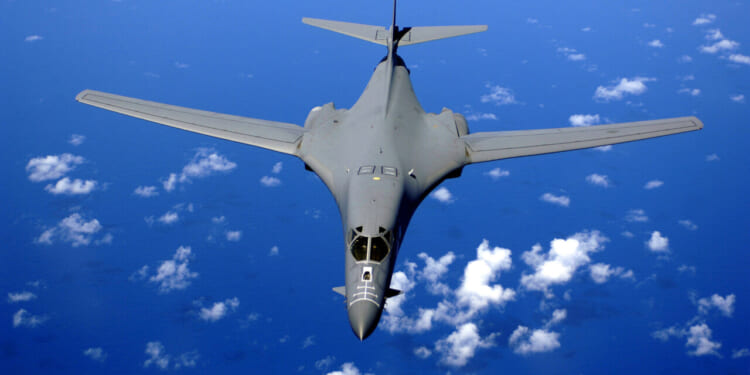Since October 15, the US military has carried out three attack demonstrations with B-1 bombers near Venezuela.
The Trump administration has been ramping up US military presence near Latin America. In response to what the White House refers to as the rising threat of drug cartels in the region, American defense equipment and personnel ranging from warships and bombers to destroyers and aircraft carriers have been sent to address the issue. Most recently, several B-1B “Lancer” bombers were deployed to the coast of Venezuela, representing the latest show of force aimed at Caracas and associated drug cartels.
Since October 15, three “bomber attack demonstrations” carried out by B-1 bombers have been carried out near the Latin American country. According to publicly accessible flight tracking data, two B-1s took off from Dyess Air Force Base in Texas before making their way through the Caribbean and up the Venezuelan coast. One week prior, a similar flight carried out by the service’s B-52 Stratofortress bomber fleet also took place in the same general area.
The Trump administration first issued an executive order (EO) aimed at dismantling drug cartels back in January. As detailed in the EO, “The Cartels’ activities threaten the safety of the American people, the security of the United States, and the stability of the international order in the Western Hemisphere. Their activities, proximity to, and incursions into the physical territory of the United States pose an unacceptable national security risk to the United States.”
Introducing the B-1 Lancer
When it comes to US aerial power, the Rockwell B-1 Lancer certainly comes to mind. The supersonic heavy bomber has remained in service with the Air Force for half a century. The B-1’s impressive reputation and track record in conflict have ensured the platform’s survival over time, even in light of newer bombers being produced. Initially, the Lancer was conceptualized to incorporate the Mach-2.0 speed of the Convair B-58 Hustler and the unmatched payload and range of the Boeing B-52 Stratofortress. The resulting Rockwell prototype incorporated large variable sweep-wings and other features, making it a formidable counter against the USSR’s then-growing anti-aircraft surface-to-air missile (SAM) arsenal.
Though the B-1 was sidelined temporarily in the 1970s, the program was revived under President Ronald Reagan in 1981. The new B-1B variant was slower than the original Rockwell prototype, but was significantly cheaper to manufacture and produce. According to the Air Force, “an additional structure to increase payload by 74,000 pounds, an improved radar and reduction of the radar cross-section by an order of magnitude. The changes led to a reduction in maximum speed to Mach 1.2.” Over the years, the platform has been modified in order for it to remain relevant in modern times. The latest B-1B can notably carry two dozen hypersonic attack cruise missiles internally, and up to one dozen externally, for a total added armament load of 36 weapons. Based on enhancements like this, the Lancer platform is expected to remain in service for years to come.
About the Author: Maya Carlin
Maya Carlin, National Security Writer with The National Interest, is an analyst with the Center for Security Policy and a former Anna Sobol Levy Fellow at IDC Herzliya in Israel. She has by-lines in many publications, including The National Interest, Jerusalem Post, and Times of Israel. You can follow her on Twitter: @MayaCarlin. Carlin has over 1,000 articles published over the last several years on various defense issues.
Image: DVIDS.
















